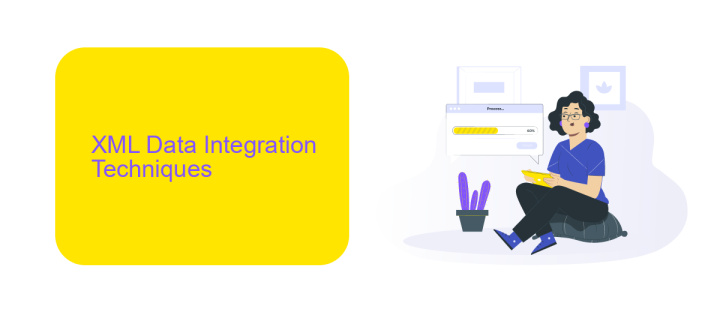XML Data Integration
XML Data Integration is a crucial aspect of modern data management, enabling seamless exchange and consolidation of information across diverse systems and applications. By leveraging the flexibility and standardization of XML, organizations can efficiently integrate disparate data sources, ensuring consistency and accuracy. This article explores the methodologies, tools, and best practices for effective XML data integration, highlighting its significance in today's interconnected digital landscape.
Data Integration Challenges
Integrating XML data from various sources poses several significant challenges. These challenges can hinder the seamless flow of information and create bottlenecks in data processing workflows.
- Data Heterogeneity: Different data sources often use diverse schemas, making it difficult to achieve uniformity.
- Data Quality: Inconsistent or incomplete data can lead to errors and misinterpretations.
- Scalability: Handling large volumes of XML data requires robust infrastructure and can be resource-intensive.
- Security: Ensuring data privacy and protection during integration is crucial.
- Real-time Integration: Synchronizing data in real-time across multiple platforms can be complex.
Services like ApiX-Drive can help mitigate these challenges by providing automated solutions for data integration. ApiX-Drive supports various data formats and platforms, ensuring seamless and secure data transfer. By leveraging such tools, businesses can enhance the efficiency and reliability of their XML data integration processes.
XML Data Integration Techniques

XML Data Integration involves various techniques to combine data from different sources into a unified format. One common method is using XSLT (eXtensible Stylesheet Language Transformations) to transform XML data from one schema to another. This technique is particularly useful when dealing with heterogeneous data sources that need to be standardized for further processing or analysis. Another approach is the use of XML Schema Definition (XSD) to validate and ensure the consistency of XML data across different systems, thereby facilitating seamless data integration.
Modern tools and services like ApiX-Drive can significantly simplify the process of XML data integration. ApiX-Drive provides a user-friendly interface for setting up automated workflows between various applications and databases, allowing for real-time data synchronization. By leveraging such platforms, organizations can reduce the complexity and time required for integrating XML data, ensuring that data from disparate sources is harmonized efficiently and accurately. This not only enhances data quality but also improves operational efficiency.
Benefits of XML Integration

XML integration offers numerous benefits for businesses looking to streamline their data management processes. By utilizing XML, organizations can ensure that their data is easily readable and transferable between different systems, enhancing overall efficiency and reducing the likelihood of errors.
- Standardization: XML provides a standardized format for data, making it easier to share information across different platforms and applications.
- Flexibility: XML's flexible structure allows for the representation of complex data models, accommodating a wide range of data types and relationships.
- Interoperability: XML facilitates seamless data exchange between disparate systems, enabling better collaboration and integration of services.
- Scalability: XML can handle large volumes of data, making it suitable for both small-scale and enterprise-level applications.
- Automation: Tools like ApiX-Drive can automate the integration process, saving time and reducing manual effort.
By leveraging XML for data integration, businesses can achieve greater consistency and accuracy in their data management practices. The use of services such as ApiX-Drive further simplifies the integration process, allowing companies to focus on their core operations while ensuring their data remains synchronized and up-to-date across all platforms.
Tools for XML Data Integration

XML data integration is a crucial aspect of modern data management, enabling seamless communication between different systems and applications. To achieve effective XML data integration, various tools and technologies are available that facilitate the process by providing functionalities such as data transformation, validation, and mapping.
These tools help in streamlining the integration process, ensuring that data from different sources can be combined and utilized efficiently. They offer features that simplify the handling of complex XML structures and automate repetitive tasks, making the integration process more manageable and less error-prone.
- Altova MapForce: A data mapping and transformation tool that supports XML and other formats.
- Oxygen XML Editor: A powerful XML editor that provides comprehensive support for XML development and integration.
- ApiX-Drive: An integration platform that allows easy setup of data flows between various applications, including XML-based systems.
- Talend Data Integration: An open-source data integration tool that supports XML and other data formats.
Choosing the right tool for XML data integration depends on the specific requirements of your project, such as the complexity of the XML data, the need for real-time integration, and the level of automation desired. By leveraging these tools, organizations can ensure efficient and reliable data integration, enhancing their overall data management capabilities.


Case Studies and Examples
One notable case study in XML data integration involves a large e-commerce company that needed to synchronize product information across various platforms. By leveraging XML, they were able to create a unified data format that facilitated seamless communication between their inventory management system, website, and third-party marketplaces. This integration significantly reduced manual data entry errors and improved the overall efficiency of their operations.
Another example is a healthcare provider integrating patient records from multiple sources using XML. The provider utilized ApiX-Drive to automate the data transfer between their electronic health record (EHR) system and external laboratories. ApiX-Drive's user-friendly interface and robust automation capabilities allowed for real-time updates and ensured that patient information was always current and accurate. This not only enhanced patient care but also streamlined administrative processes, saving both time and resources.
FAQ
What is XML Data Integration?
Why is XML commonly used for data integration?
How can I automate XML data integration processes?
What are the challenges of XML Data Integration?
How do I ensure data security during XML Data Integration?
Apix-Drive will help optimize business processes, save you from a lot of routine tasks and unnecessary costs for automation, attracting additional specialists. Try setting up a free test connection with ApiX-Drive and see for yourself. Now you have to think about where to invest the freed time and money!

